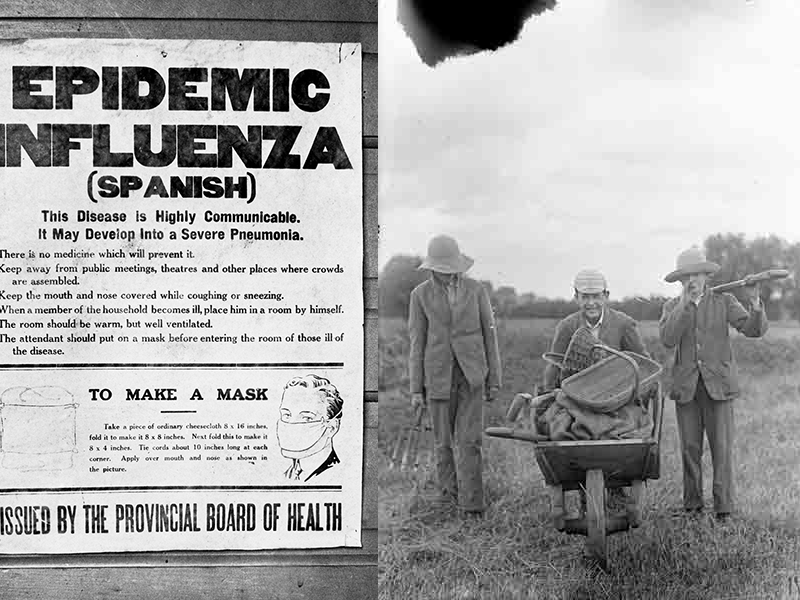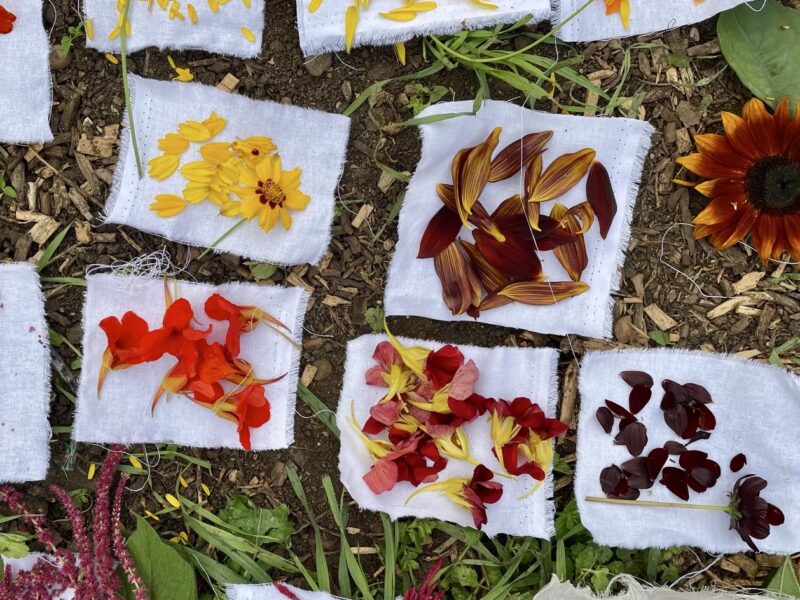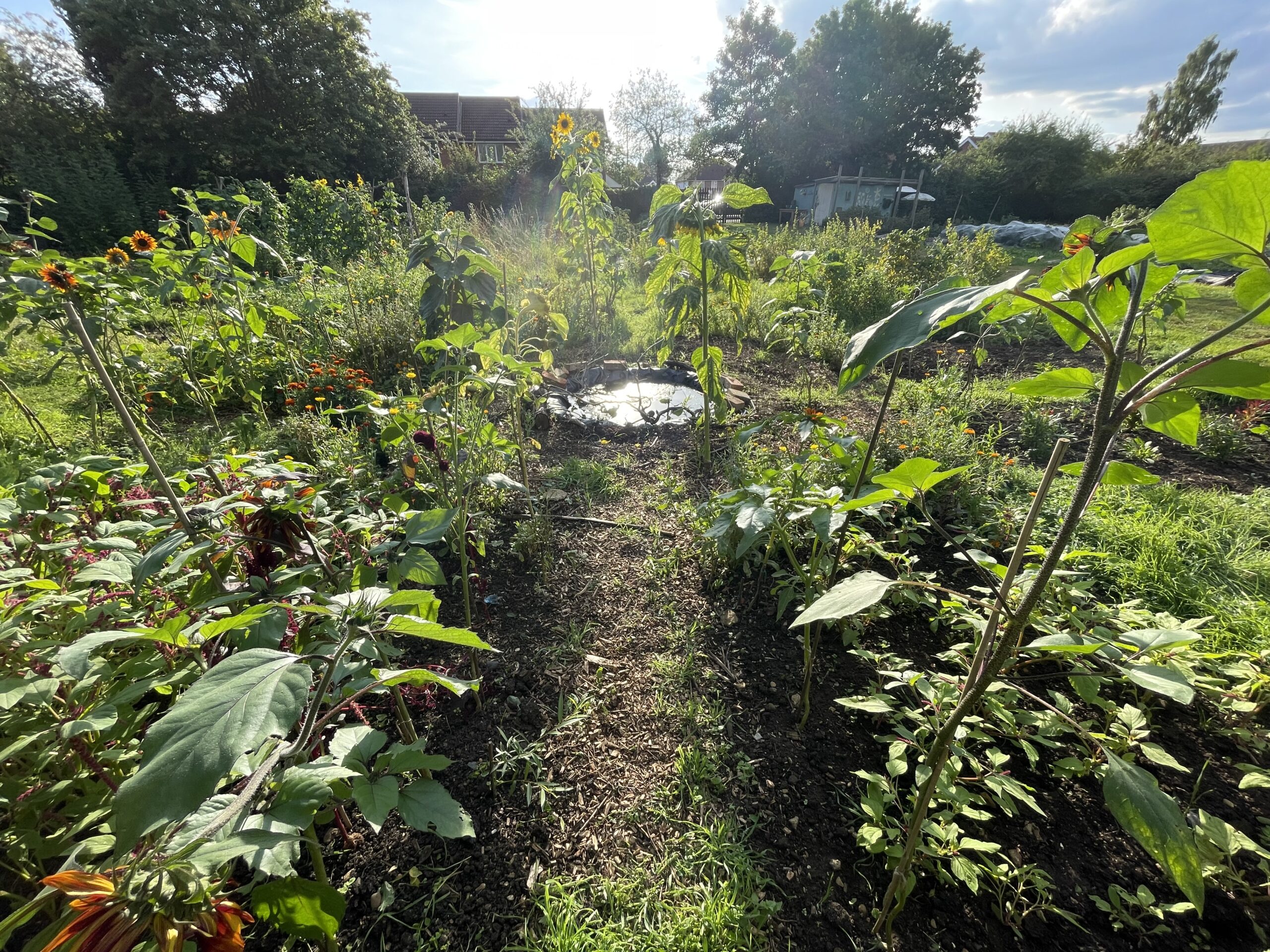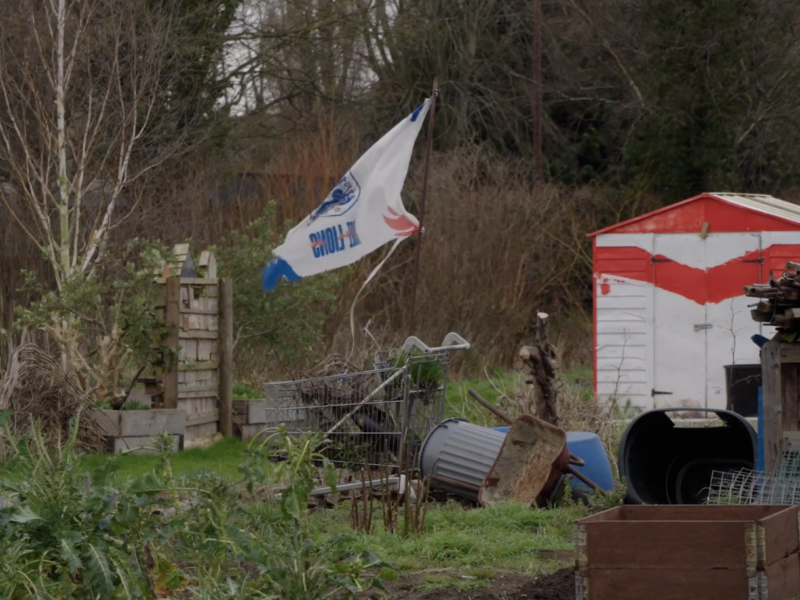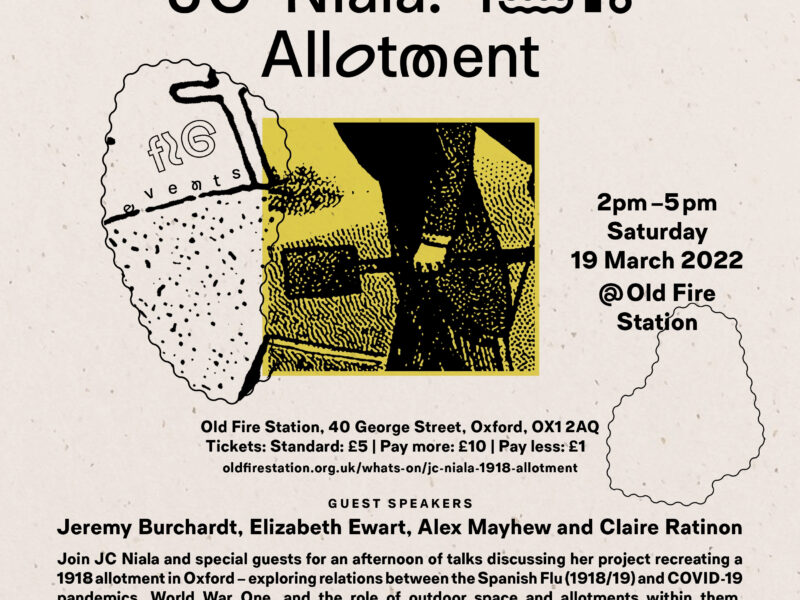Journal — July 2021
"While we as human beings work by demarcating and categorising, nature laughs at our efforts by reminding us of our interconnection."
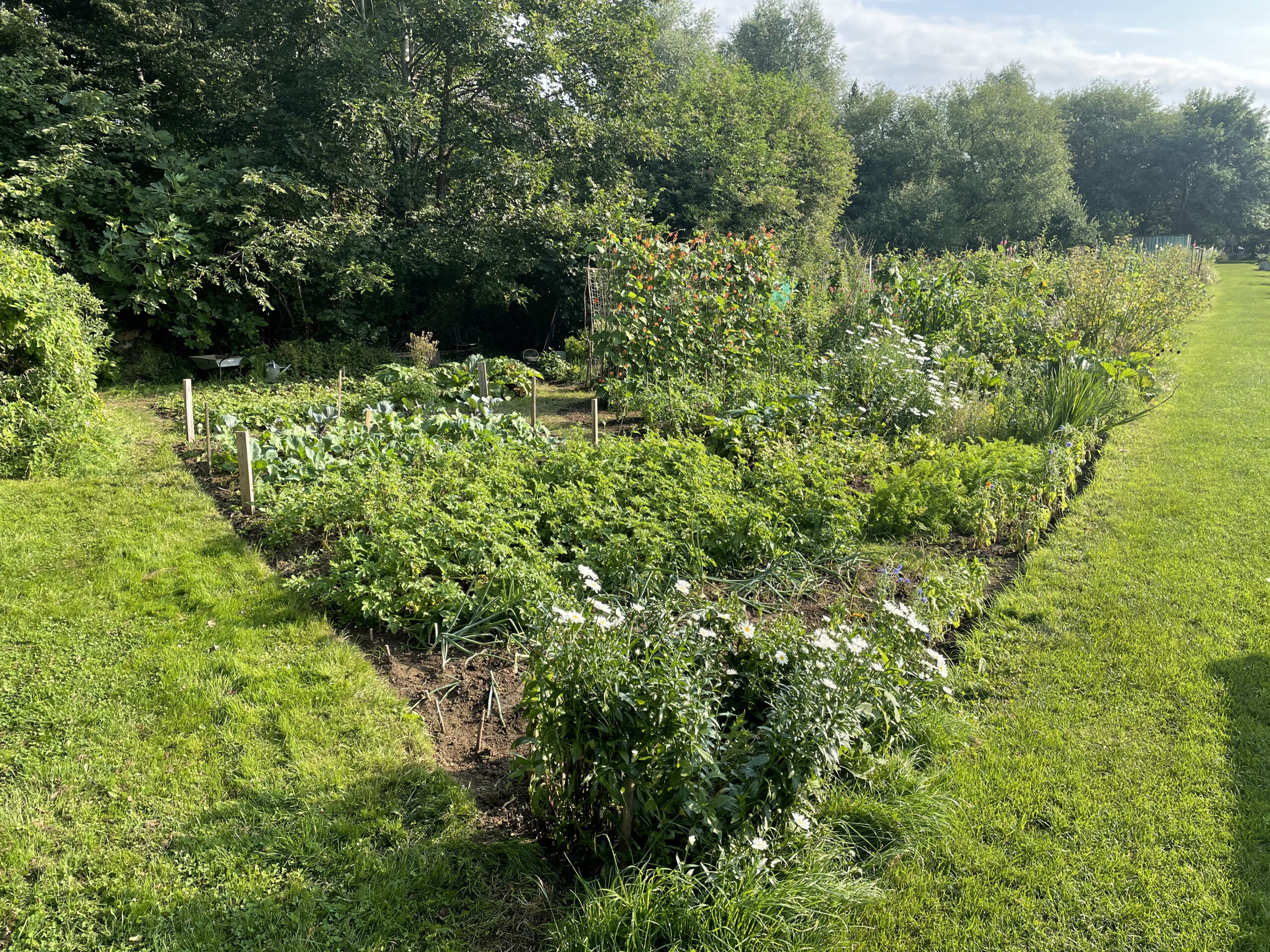
Re-creating the 1918 Allotment has meant an inordinate amount of time thinking about boundaries. Some of them were about where to draw the line. For example, I have already written about the decision not to use pesticides as would have been the norm in 1918. Apart from the obvious defensive architecture that is the allotment site boundary fence (complete with sloping spikes to make it difficult for an interloper to climb over), allotment sites are full of boundaries – many of them invisible.
The most common invisible boundary is that which surrounds an allotment plot on a site. Elders Stubbs site which hosts the 1918 Allotment is relatively free of internal fencing but there are sites on which the opposite extreme is the case, and every individual plot is fenced. I have to admit that I am less enamoured of these kinds of sites as they can feel like a maze that mimics rat runs on densely urbanised streets. Despite the lack of internal fencing, people rarely cross into another’s plot without invitation. There is a very real if invisible boundary which is respected.
An even subtler boundary is the one of sociability – allotmenteers will exchange greetings but also many of them cultivate their plots in order to ‘get away from it all’ and as such do not readily welcome extended conversation. Or there are those who have busy lives and managing to allotmenteer is carried out in snatches of time which leads to the same net result – very little time or inclination to while the hours away on idle chatter. Allotmenteers – particularly those in 1918 had a profound calling to be productive and work on the plot is prioritised. It therefore takes a reading of body language to understand when these boundaries around sociability are being crossed. The slight fidget or more obvious returning to job at hand will often indicate that the warm pleasantries that have been exchanged are as far as it goes – and now it is time for both parties to return to what it was they came to do. That is not to say that allotmeneteers are not sociable. It is just that sociability is squeezed into opportune moments and not allowed to go wild like weeds.
I have found this to also hold true amongst allotmenteers who share plots (which is increasingly common). The traditional allotment plot of 10 poles (or about the size of a double tennis court) is increasingly large for time poor urbanites and a solution is for people to share plots. In these cases, the boundary is well maintained (to avoid conflict) and some people sharing a plot purposely do not garden at the same time in case it becomes too distracting.
What interests me most is the meaning that we attach to boundaries. When I was carrying out my doctoral research it transpired that the biggest source of conflict (when there was any) between allotmeneteers was around boundaries. It was not lost on me that this is because no matter how real they might evolve to appear to us, they are meaningless to the plants and creatures who also share the allotment site. While we as human beings work by demarcating and categorising, nature laughs at our efforts by reminding us of our interconnection. Like a row of conscientiously planted raspberry canes sown along a boundary, which grows the best berries on the branches that overhang the neighbouring plot.
